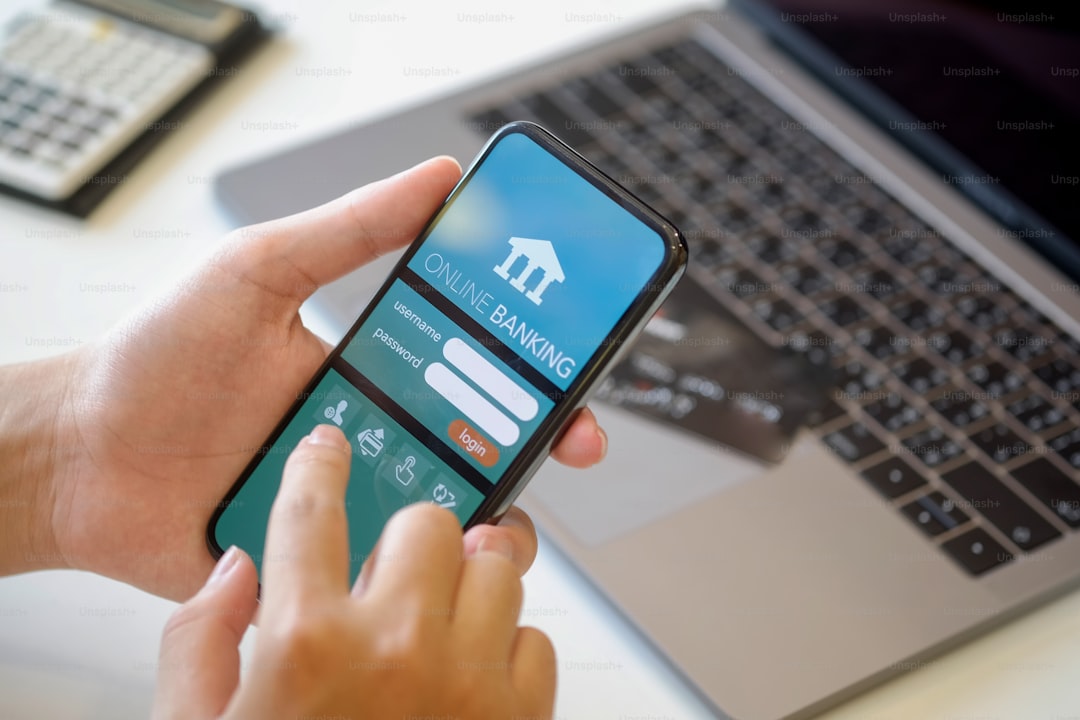Top Strategies For Managing Projects Across Multiple Time Zones

Introduction
In today’s global economy, teams are rarely confined to a single office or even a single continent. Projects that involve developers in India, designers in Europe, marketers in North America and stakeholders in Australia have become the norm rather than the exception. The biggest advantage of this diversity is access to talent around the clock, but the biggest challenge is coordinating work when people are awake at completely different times.
Managing projects across multiple time zones requires more than just a shared calendar. It demands deliberate planning, clear communication protocols, technology that bridges the distance and a culture that respects both the business goals and the human needs of each participant. The strategies outlined below are drawn from real‑world case studies, research on distributed work and practical experience from teams that have turned the “time zone problem” into a competitive advantage.
Understanding the Core Challenges
Before diving into tactics, it helps to clarify what makes multi‑zone projects difficult. The obstacles can be grouped into three categories: temporal friction, informational gaps and cultural differences.
Temporal friction occurs when the working hours of two or more team members barely overlap. A meeting that works for a colleague in San Francisco may fall at 3 am for a teammate in Tokyo. This limits real‑time collaboration, slows decision‑making and can increase the likelihood of missed deadlines.
Informational gaps arise when updates, documents or decisions are handed off without sufficient context. When a handoff happens at the end of one person’s day, the next person may start their day with incomplete knowledge, leading to rework or duplicated effort.
Cultural differences are not limited to language or etiquette, they also encompass attitudes toward work‑life balance, hierarchy and risk. A team that does not acknowledge these nuances can unintentionally create friction that compounds the time‑zone issue.
Recognizing these pain points is the first step toward building a resilient process.
Establish a Unified Time‑Zone Reference
A common mental model of time helps everyone stay on the same page.
- Choose a single “project base time” such as Coordinated Universal Time (UTC) and display all deadlines, sprint dates and meeting times in that reference.
- Provide a quick‑look conversion table in the project wiki for the most common locations (e.g., New York, London, Berlin, Singapore, Sydney).
- Encourage team members to set their calendar default to the project base time so that any new event automatically aligns with the shared reference.
When everyone speaks the same time language, the mental overhead of conversion drops dramatically.
Design Overlapping “Core Hours”
While it is impossible for a truly global team to have a 24‑hour overlap, a deliberately designed window of simultaneous availability can dramatically improve responsiveness.
- Identify the geographic locations with the largest number of participants.
- Find a two‑ to three‑hour slot where at least half of the team can be online.
- Use this window for real‑time activities that require rapid feedback: sprint planning, critical design reviews, issue triage and stakeholder demos.
If the team’s composition changes over time, the core hours can be adjusted. The key is to treat the overlap as a shared resource and schedule it with the same rigor as any other project deliverable.
Leverage Asynchronous Communication Effectively
When core hours are limited, the bulk of day‑to‑day collaboration must happen asynchronously. To make asynchronous work reliable:
- Adopt a single, threaded communication platform for project discussions (e.g., Slack, Microsoft Teams). Create dedicated channels for each functional area and use clear naming conventions.
- Encourage the use of “status tags” at the beginning of messages: [INFO], [QUESTION], [DECISION‑NEEDED] so readers can prioritize.
- Require that every important decision be documented in a permanent location such as a Confluence page or a shared Google Doc. Include a brief rationale, alternatives considered and the final outcome.
- Set expectations for response times based on message priority. For example, a “quick question” might have a 4‑hour SLA while a “decision‑needed” item could have an 8‑hour SLA.
By defining the expectations around asynchronous work, the team reduces the anxiety that often accompanies delayed replies.
Implement Structured Hand‑Off Rituals
A hand‑off is the moment when work transitions from one time zone to another. A well‑structured hand‑off minimizes confusion and preserves momentum.
- Use a standardized hand‑off template that includes: current status, next steps, blockers, required decisions and any relevant files or links.
- Record a short voice or video note summarizing the hand‑off for added context. Some teams find a 2‑minute Loom recording helpful.
- Place the hand‑off in a shared folder or project board with a clear “Ready for next zone” label.
- Assign a “handoff owner” who is responsible for confirming that the receiving team has acknowledged the transfer and has no outstanding questions.
These rituals turn what could be an ad‑hoc email exchange into a repeatable process.
Choose the Right Project Management Tool
A centralized, real‑time project management platform is essential for visibility across time zones. The tool should support:
- Kanban or Scrum boards that can be filtered by assignee, region or sprint.
- Automatic time‑zone conversion for due dates and reminders.
- Integration with version control, CI/CD pipelines and communication platforms.
- Custom fields for “region” or “working hours” so that filters can highlight tasks that are currently in‑progress for a particular zone.
Popular choices include Jira, ClickUp, Asana and Monday.com. The important factor is not the brand but the degree to which the tool can be customized to surface the right information at the right time.
Adopt a “Follow‑the‑Sun” Workflow
A follow‑the‑sun model treats the globe as a continuous production line. To make this model work:
- Break down deliverables into small, independent units that can be completed within a single shift.
- Define clear entry and exit criteria for each unit. For example, a code module is considered “ready for hand‑off” when unit tests pass, code review is approved and documentation is updated.
- Align sprint boundaries with the hand‑off cadence. A two‑week sprint might contain four hand‑offs, each occurring at the end of a regional shift.
- Use metrics such as “cycle time per zone” to identify bottlenecks and adjust workload distribution.
When executed well, the follow‑the‑sun approach can cut overall project duration by 30 % or more, because work never truly stops.
Foster a Culture of Transparency
Transparency reduces the need for constant clarification, which is especially valuable when people cannot speak in real time. Practices that reinforce transparency include:
- Daily “stand‑up notes” posted in a shared channel, even if the team does not meet synchronously. Each note should cover what was done yesterday, what is planned for today and any blockers.
- A public roadmap that shows upcoming milestones, feature releases and dependencies.
- Open access to logs, dashboards and performance metrics. When a server goes down in a region, anyone can see the incident report and the remediation plan.
When information is openly available, team members can make informed decisions without waiting for a meeting.
Prioritize Documentation Over Memory
In distributed environments, relying on “I’ll tell you later” is risky. High‑quality documentation becomes the single source of truth.
- Create living documents for architecture, API contracts, design guidelines and deployment processes.
- Use version control for documentation so that changes are traceable.
- Assign “document owners” who periodically review and update content.
- Include a “last updated” timestamp on every page to signal freshness.
Well‑maintained documentation shortens onboarding time for new hires in any time zone and reduces the number of repetitive questions.
Set Clear Expectations for Availability
Ambiguity around when a teammate is reachable can cause frustration. To manage expectations:
- Require each team member to set a weekly “availability block” in the shared calendar, indicating when they are online, offline and on break.
- Encourage the use of status indicators (e.g., “focus mode”, “away”) on communication platforms.
- Establish a “response window” policy: if a task is marked as urgent, the owner must acknowledge within a defined timeframe; otherwise the task can be escalated to the next available region.
Clarity around availability lets the team plan work without fearing silent delays.
Use Time‑Zone Aware Scheduling Tools
Scheduling meetings across continents can be a nightmare if done manually. Automation helps:
- Use calendar tools that display multiple time zones side by side (e.g., Google Calendar’s world clock feature).
- Leverage meeting‑finder extensions that suggest optimal times based on participants’ working hours.
- When a meeting must include members from every region, rotate the meeting time each week so the burden does not fall on the same subset of people.
By taking the friction out of scheduling, the team can preserve energy for productive work.
Balance Synchronous and Asynchronous Work
Not every task benefits from real‑time collaboration. Knowing when to schedule a live discussion versus an asynchronous exchange is key.
- Reserve synchronous sessions for activities that require rapid brainstorming, conflict resolution or shared visual work (e.g., whiteboard sessions, UI mock‑up reviews).
- Use asynchronous methods for status updates, code reviews, documentation edits and backlog grooming.
A simple decision matrix can guide the choice: if the task involves more than two stakeholders and the outcome is time‑sensitive, schedule a live meeting; otherwise, default to async.
Build Redundancy Into Critical Roles
If a single person in a particular time zone holds a unique piece of knowledge, the project becomes vulnerable whenever that person is offline. To mitigate risk:
- Cross‑train team members on critical processes. For instance, have at least two engineers who can deploy to production.
- Document “runbooks” that detail step‑by‑step procedures for incident response, database migrations and other high‑impact activities.
- Rotate on‑call duties across regions so that knowledge is evenly distributed.
Redundancy ensures that progress does not stall because of a single time‑zone gap.
Measure and Iterate
No strategy is perfect out of the gate. Continuous improvement is essential.
- Track metrics such as average response time, hand‑off duration, sprint velocity per region and number of blockers related to time‑zone issues.
- Conduct quarterly retrospectives that specifically focus on cross‑zone collaboration. Invite participants from each region to share pain points and successes.
- Adjust core hours, hand‑off templates or documentation practices based on the data.
When the team treats its processes as experiments, it can quickly adapt to changing personnel, new tools or shifting market demands.
Leverage Cultural Strengths
Different regions often bring distinct work styles that can be complementary.
- Teams in East Asia may excel at meticulous detail and thorough testing.
- Teams in North America may bring rapid prototyping and risk‑taking.
- Teams in Europe often provide a balance of structured planning and creative problem solving.
By recognizing and valuing these strengths, a project manager can assign work that aligns with regional expertise, turning time‑zone diversity into a strategic asset.
Provide Mental‑Health Support
Working across time zones can blur the line between work and personal life, leading to burnout. Managers should:
- Encourage strict boundaries for after‑hours communication. Use “do not disturb” policies that limit non‑urgent messages during evenings and weekends.
- Offer flexible scheduling so that individuals can shift their core hours when needed (e.g., during holidays or personal events).
- Provide resources such as counseling services, wellness webinars and virtual coffee breaks that foster connection despite distance.
A healthy team is more resilient and productive, regardless of where members are located.
Case Study: A Follow‑the‑Sun Product Launch
A mid‑size SaaS company launched a new feature that required collaboration among developers in Bangalore, product designers in Berlin, QA engineers in Austin and a marketing team in Sydney. The project timeline was six weeks.
Key actions taken:
- The project lead set UTC as the base time and created a conversion chart for all four locations.
- Core hours were defined from 14:00 UTC to 16:00 UTC, overlapping with Bangalore’s evening, Berlin’s morning, Austin’s early morning and Sydney’s late night.
- Hand‑off templates were used at the end of each day in Bangalore, transferring code to the Berlin designers for UI review.
- A shared Confluence space housed architecture diagrams, API contracts and a step‑by‑step release checklist.
- Daily stand‑up notes were posted in a dedicated Slack channel, allowing each region to read the updates on their own schedule.
- The team rotated the weekly demo meeting, ensuring that no single region bore the burden of an early‑morning call every week.
Outcome: The feature shipped two days ahead of schedule, with zero critical bugs reported post‑release. Team satisfaction surveys indicated a 15 % increase in perceived collaboration effectiveness compared with the previous quarter.
This example illustrates how the strategies described can be combined into a coherent workflow that delivers tangible results.
Practical Checklist for Managers
- Choose a single project base time (preferably UTC).
- Publish a conversion table for all major locations.
- Define and communicate core overlap hours.
- Select a unified communication platform and set status tags.
- Implement a hand‑off template and assign hand‑off owners.
- Adopt a project management tool with time‑zone aware features.
- Break work into small, independent units suitable for follow‑the‑sun flow.
- Establish transparent documentation practices.
- Set clear availability expectations in shared calendars.
- Use automated scheduling assistants for meetings.
- Rotate meeting times to share the burden evenly.
- Cross‑train critical roles and maintain runbooks.
- Track key metrics and hold regular retrospectives.
- Recognize and leverage regional cultural strengths.
- Prioritize mental‑health policies and enforce after‑hours boundaries.
Checking off each item creates a solid foundation for any multi‑zone initiative.
Conclusion
Managing projects across multiple time zones is no longer a niche skill; it is a core competency for modern organizations that aim to compete globally. By establishing a shared temporal reference, designing intentional overlap, mastering asynchronous communication, formalizing hand‑offs, leveraging the right tools and fostering a culture of transparency, teams can turn the challenge of distance into a source of continuous productivity.
The strategies presented here are inter‑dependent; the most effective results come from applying them as an integrated system rather than in isolation. As teams iterate, measure outcomes and adapt to new circumstances, the ability to deliver high‑quality work on a global stage becomes a sustainable competitive advantage.
Embrace the diversity of time zones, respect the human rhythms behind each clock, and watch your projects move forward with the relentless momentum of a world that never sleeps.
Random Posts

Where to Live and Work Abroad Top Cities for Digital Nomads
Discover the best cities for digital nomads, ranked by fast internet, affordable living, visa ease, and vibrant culture, plus practical tips to settle in and stay productive wherever you roam
1 month ago

Bali Budget Blueprint for Digital Nomads
Discover how to live and work in Bali on a budget with clear expense breakdowns, money-saving tips, and sample monthly plans that let you enjoy the island without overspending.
1 month ago

Connecting Wanderers Through Global Nomad Community Events
Global nomad events turn solo travel into a shared adventure, linking remote workers through fast-internet coffee talks, collaborative brainstorming, and lasting friendships that boost careers and personal growth.
2 months ago

Building a Secure Financial Plan on the Road
Learn to build a resilient financial system for digital nomads, covering income streams, budgeting, tax compliance, insurance, retirement and emergency funds, so you can travel worry-free.
1 month ago

Essential Banking Solutions Every Digital Nomad Needs
Discover the must have banking tools for digital nomads: global access, low fees, strong security, tax compliance and crypto options. Learn how to set them up and avoid common pitfalls.
2 days ago
Latest Posts

Essential Software Every Remote Professional Should Use
Master remote work with essential tools: instant messaging like Slack, high definition video calls such as Zoom, and asynchronous voice apps. Streamline communication, stay connected and boost productivity.
1 day ago

Mastering Remote Work Productivity for Digital Nomads and Freelancers
Learn proven habits, tools, and tactics that help digital nomads and freelancers stay focused, deliver quality work, and maintain a sustainable lifestyle while traveling the world.
1 day ago

Tech‑Friendly European Towns Perfect for Remote Living
Discover Europe’s best small towns where fast internet, affordable living and vibrant tech communities let you work remotely while soaking up historic charm, lakeside views or mountain air.
1 day ago